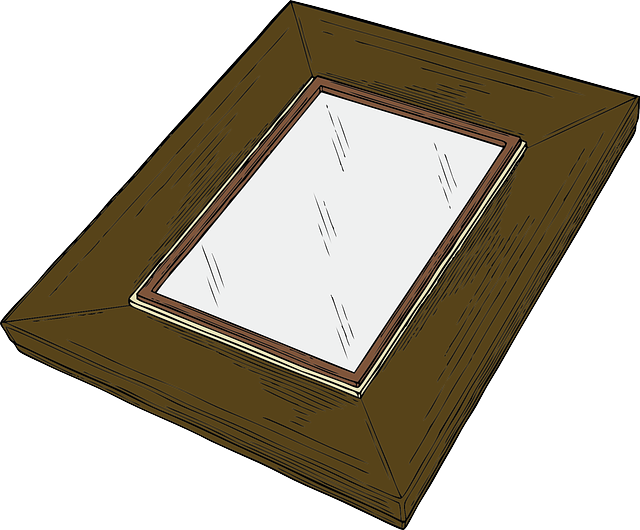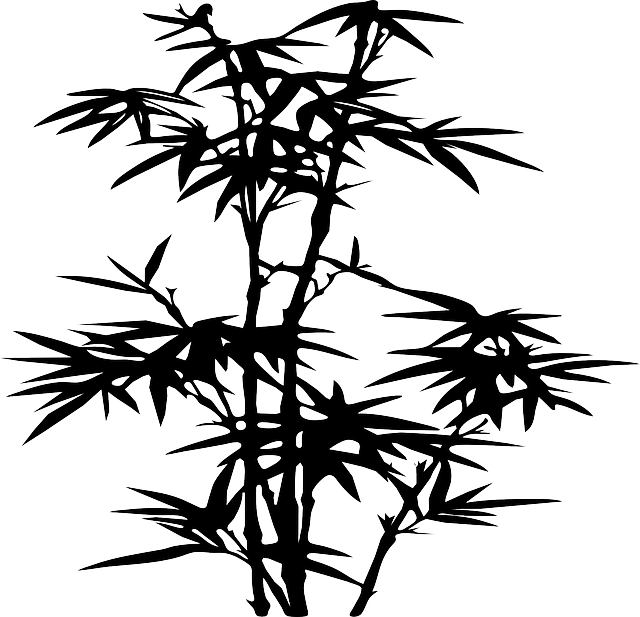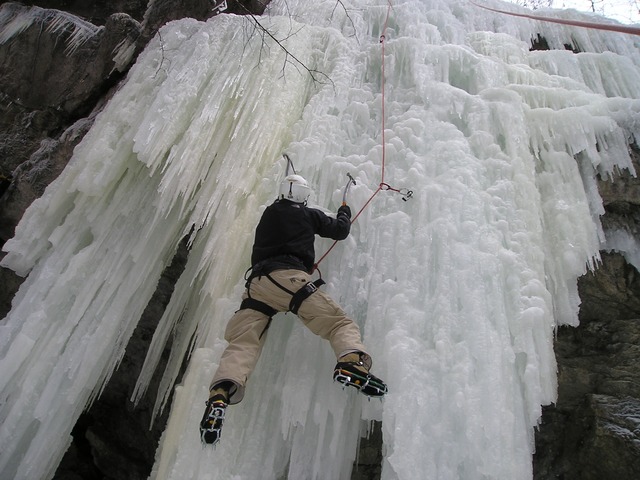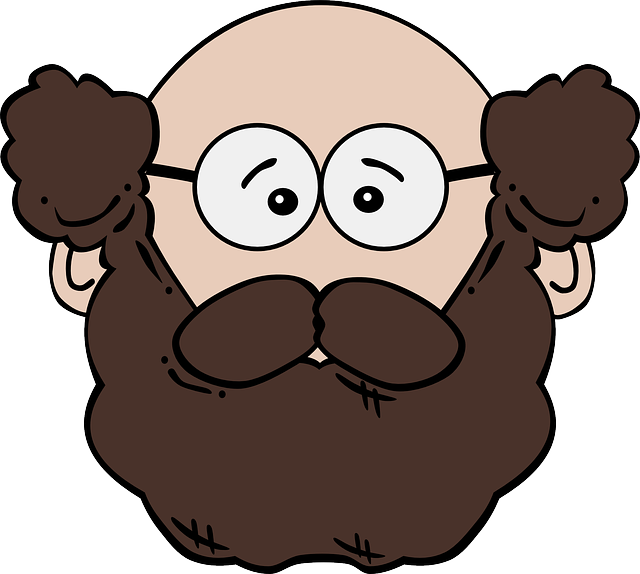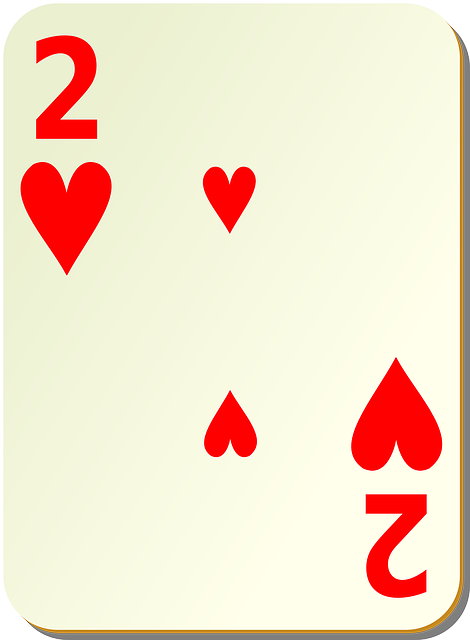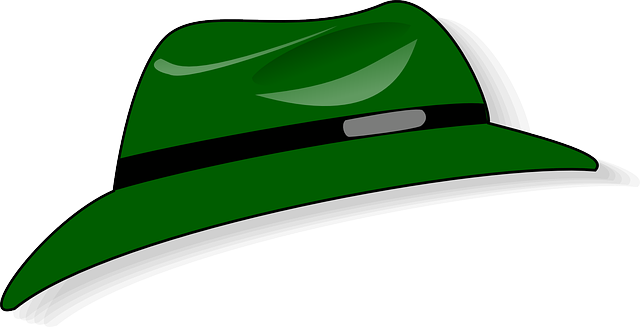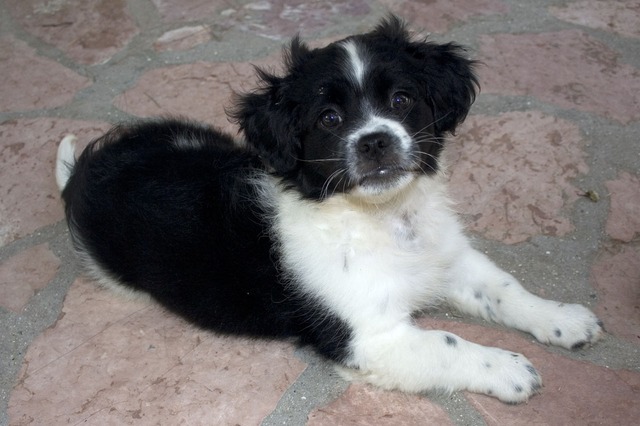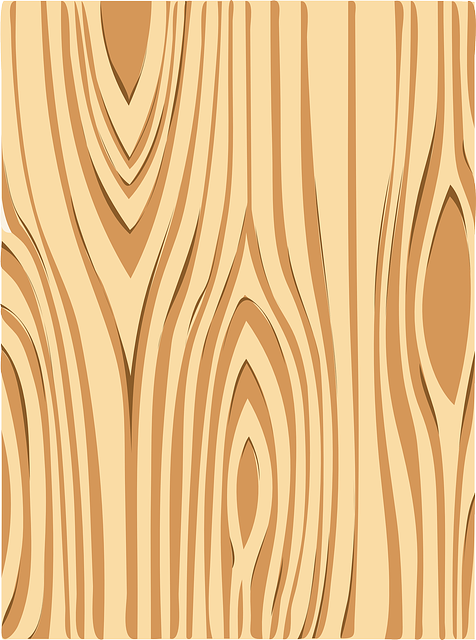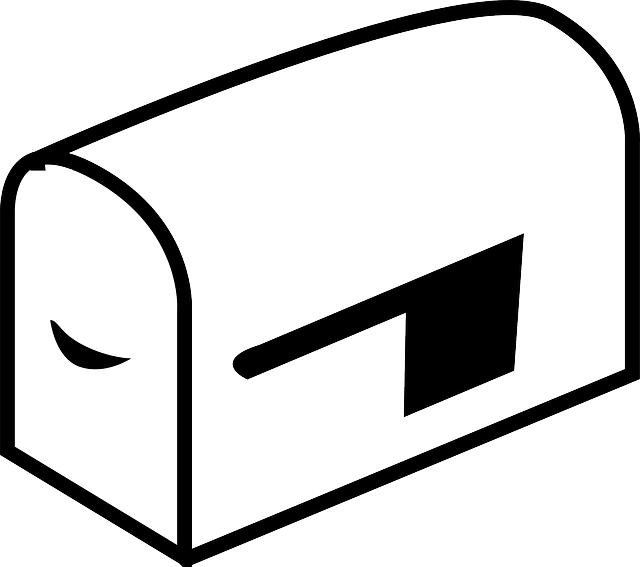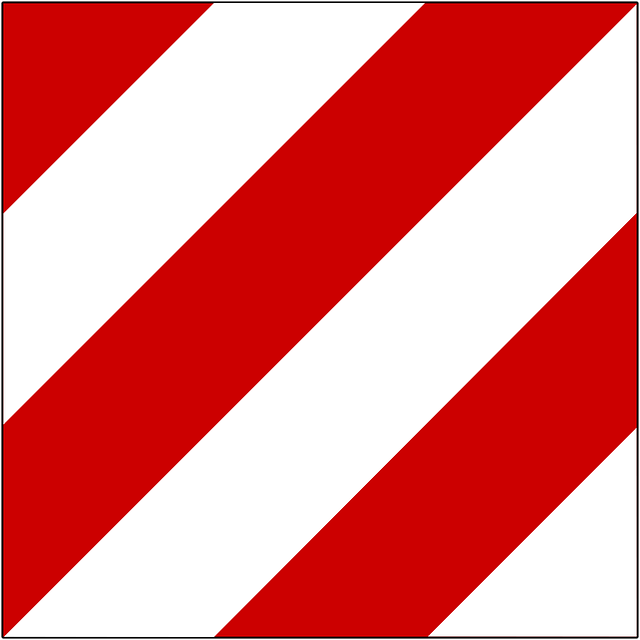ناقل الطاقة اللاسلكي
ناقل الطاقة اللاسلكي (WPT), wireless power transmission, wireless energy transmission (WET), أونقل الطاقة الكهرومغناطيسية فهونقل الطاقة الكهربائية بدون أسلاك كوصلة عملية. في نظام إرسال الطاقة اللاسلكي ، يقوم جهاز الإرسال ، الذي يتم تشغيله بواسطة الطاقة الكهربائية من مصدر الطاقة ، بتوليد المجال الكهرومغناطيسي متغير الزمن ، والذي ينقل الطاقة عبر الفضاء إلى جهاز الاستقبال ، الذي يستخرج الطاقة من الحقل ويزودها بـ حمل كهربائي. يمكن لتقنية نقل الطاقة لاسلكيًا إلغاء على استخدام الأسلاك والبطاريات ، وبالتالي زيادة قابلية التنقل والراحة والسلامة للأجهزة الإلكترونية لجميع المستخدمين. يعتبر نقل الطاقة لاسلكيًا مفيدًا لتشغيل الأجهزة الكهربائية حيث تكون أسلاك التوصيل غير ملائمة أوخطرة أوغير ممكنة.
تقسم تقنيات الطاقة اللاسلكية بشكل رئيسي إلى فئتين ، المجال القريب و المجال البعيد. في تقنيات " المجال القريب" أو"غير الإشعاعي" ، يتم نقل الطاقة عبر مسافات قصيرة بواسطة المجال المغناطيسي باستخدام اقتران تحريضي بين ملفات من الأسلاك ، أوعن طريق المجال الكهربائي باستخدام اقتران سعوي بين الأقطاب المعدنية. فالاقتران التحريضي هوالتكنولوجيا اللاسلكية الأكثر استخدامًا ؛ تضم تطبيقاته شحن الأجهزة المحمولة يدويًا مثل الهواتف وفرشاة الأسنان الكهربائية وبطاقات RFID والطهي التحريضي والشحن لاسلكيًا أونقل الطاقة اللاسلكية المستمرة في الأجهزة الطبية المزروعة مثل أجهزة تنظيم ضربات القلب الاصطناعي ، أوالمركبات كهربائية.
في تقنيات المجال البعيد أوالإشعاعي ، والتي تسمى أيضًا حزمة الطاقة ، يتم نقل الطاقة بواسطة حزم من الإشعاع الكهرومغناطيسي ، مثل الأمواج الميكروية أوأشعة الليزر. يمكن لهذه التقنيات حتى تنقل الطاقة لمسافات أطول ولكن يجب حتى تستهدف جهاز الاستقبال. التطبيقات المقترحة لهذا النوع هي سواتل الطاقة الشمسية ، وطائرات بدون طيار لاسلكية.
هناك معضلة مهمة مرتبطة بجميع أنظمة الطاقة اللاسلكية وهي الحد من تعرض الأشخاص والكائنات الحية الأخرى إلى الضرر المحتمل المجال الكهرومغناطيسي.
نظرة عامة
النقل اللاسلكي للطاقة هومصطلح عام لعدد من التقنيات المتنوعة لنقل الطاقة عن طريق المجال الكهرومغناطيسي. تختلف التقنيات ، المدرجة في الجدول أدناه ، في المسافة التي يمكن من خلالها نقل الطاقة بكفاءة ، وما إذا كان يجب توجيه جهاز الإرسال (الموجه) إلى جهاز الاستقبال ، بالنسبة لنوع الطاقة الكهرومغناطيسية فهم يستخدمون: الحقول الكهربائية متغيرة الزمن، الحقول المغناطيسية ، موجة الراديو، الأمواج الميكروية ، الأشعة تحت الحمراء أوالموجة الضوئية المرئية.
بشكل عام ، يتكون نظام الطاقة اللاسلكية من جهاز "إرسال" متصل بمصدر طاقة مثل خط طاقة رئيسية ، والذي يحول الطاقة إلى مجال كهرومغناطيسي متغير بمرور الزمن ، وجهاز أوأكثر من أجهزة "الاستقبال" التي تستقبل الطاقة وتحولها إلى تيار كهربائي DC أوAC والذي يتم استخدامه من قبل حمل كهربائي. عند الجهاز المرسل ، يتم تحويل طاقة الإدخال إلى مجال كهرومغناطيسي مذبذب بواسطة نوع من أجهزة " الهوائي". يتم استخدام حدثة "هوائي" بشكل فضفاض هنا ؛ قد يحدث ملفًا من سلك يولد مجال مغناطيسي ، أوصفيحة معدنية تولد مجال كهربائي ، أو هوائي يبث أمواج لاسلكية ، أوالليزر الذي يولد الضوء. وهنالك هوائي مشابه أوجهاز اقتران في جهاز الاستقبال يحول المجالات المتذبذبة إلى تيار كهربائي. البارامتر المهم الذي يحدد نوع الأمواج هوالتردد ، الذي يحدد طول الموجة.
تستخدم الطاقة اللاسلكية نفس المجالات والأمواج مثل أجهزة الاتصال اللاسلكي كالراديو, تقنية مألوفة أخرى تنطوي على الطاقة الكهربائية المنقولة بدون أسلاك بواسطة المجالات الكهرومغناطيسية ، المستخدمة في الهواتف المحمولة ، الراديووالبث التلفزيوني ، وWiFi. الهدف في الاتصال اللاسلكي هونقل المعلومات ، لذا فإن مقدار الطاقة التي تصل إلى جهاز الاستقبال ليست مهمة للغاية ، طالما أنه يكفي حتى يتم استقبال المعلومات بشكل واضح. في تقنيات الاتصالات اللاسلكية تصل كميات ضئيلة فقط من الطاقة إلى جهاز الاستقبال. في اللقاء ، مع النقل اللاسلكي للطاقة ، فإن كمية الطاقة المستلمة هي الأمر المهم ، لذا فإن الكفاءة (جزء من الطاقة المرسلة التي يتم تلقيها) هي البارامتر الأكثر أهمية. لهذا السبب ، من المرجح حتى تكون تقنيات الطاقة اللاسلكية محدودة بالمسافة أكثر من تقنيات الاتصالات اللاسلكية.
يمكن استعمال النقل اللاسلكي للطاقة لتشغيل مرسلات أومستقبلات المعلومات اللاسلكية. يُعهد هذا النوع من الاتصالات باسم الاتصال اللاسلكي (WPC). عند استخدام الطاقة المكتسبة لتزويد طاقة مرسلات المعلومات اللاسلكية ، تُعهد الشبكة بالمعلومات اللاسلكية المتزامنة ونقل الطاقة (SWIPT); بينما عندما يتم استخدامها لتزويد طاقة مستقبلات المعلومات اللاسلكية ، تُعهد باسم شبكة الاتصالات اللاسلكية التي تعمل بالطاقة (WPCN).
في الولايات المتحدة ، قدمت لجنة الاتصالات الفيدرالية (FCC) أول شهادة لنظام الشحن اللاسلكي في ديسمبر 2017.
نستعرض تقنيات الطاقة اللاسلكية المتنوعة:
| التقنية | المجال | الاتجاهية | التردد | أجهزة الهوائي | التطبيقات الحالية و/ أوالمستقبلية المحتملة |
|---|---|---|---|---|---|
| اقتران تحريضي | قصير | منخفض | Hz – MHz | ملفات سلكية | فرشاة الأسنان الكهربائية وشحن بطارية جهاز الحلاقة والسخان التحريضي والسخانات الصناعية. |
| اقتران تحريضي متذبذب | متوسط | منخفض | kHz – GHz | ملفات سلكية مضبوطة ، عناصر مجمعة مذبذبة | شحن الأجهزة المحمولة ( Qi) ، الغرسات الطبية الحيوية ، المركبات الكهربائية ، حافلات الطاقة ، القطارات ، MAGLEV ، RFID ، البطاقة الذكية . |
| اقتران سعوي | قصير | منخفض | kHz – MHz | أقطاب لوحة معدنية | شحن الأجهزة المحمولة ، توجيه الطاقة في الدوائر المتكاملة واسعة النطاق ، البطاقات الذكية ، الغرسات الطبية الحيوية.... |
| اقتران ديناميكي مغناطيسي | قصير | N.A. | Hz | مغانط دوارة | شحن المركبات الكهربائية, الغرسات الطبية الحيوية. |
| الأمواج الميكروية | طويلة | عالي | GHz | الصحون ذات شكل بتر مكافئ, الأطوار المصفوفية, rectenna | سواتل الطاقة الشمسية, طائرة بدون طيار تعمل بالطاقة ، وشحن الأجهزة اللاسلكية |
| الأمواج الضوئية | طويلة | عالي | ≥THz | الليزر, الخلايا الضوئية, العدسات | شحن الأجهزة المحمولة , تشغيل الطائرات بدون طيار ، حوامل الإقلاع الفضائية المزودة بالطاقة. |
مناطق الحقل
يتم إنشاء الكهرباء والمجال المغناطيسي بواسطة الجسيمات المشحونة في المواد مثل الإلكترونات . تؤدي الشحنة الثابتة إلى إنشاء حقل إلكتروستاتيكي في المساحة المحيطة به. ينتج التيار الثابت من الشحنات (التيار المستمر ، DC) مجالاً مغناطيسياً ثابتاً من حوله. تحتوي الحقول المذكورة أعلاه على طاقة ، ولكن لا يمكنها حمل استطاعة لأنها ثابتة. لكن المجالات المتغيرة بمرور الوقت يمكن حتى تحمل هذه الاستطاعة. يخلق تسريع الشحنات الكهربائية ، مثل الموجودة في التيار المتناوب (AC) من الإلكترونات في السلك ، مجالات كهربائية ومغناطيسية متغيرة بمرور الزمن في المساحة المحيطة بها. يمكن لهذه الحقول حتى تمارس قوى متذبذبة على الإلكترونات في "هوائي استقبال" ، مما يجعلها تتحرك ذهابًا وإيابًا. تمثل هذه التيار المتردد الذي يمكن استخدامه لتشغيل الحمولة.
يمكن تقسيم المجالات الكهربائية والمغناطيسية المتذبذبة المحيطة بالشحنات الكهربائية المتحركة في جهاز هوائي إلى منطقتين ، اعتمادًا على المسافة Drange عن الهوائي. الحدود بين المناطق محددة إلى حد ما غير واضحة. الحقول لها خصائص مختلفة في هذه المناطق ، وتستخدم تقنيات مختلفة لنقل الطاقة:
- الحقل القريب أوالمنطقة غير الإشعاعية – وهذا يعني حتى مساحة الهوائي حوالي 1 طول الموجة ( λ ) من الهوائي. في هذه المنطقة ،قد يكون جميع من المجال الكهربائي والمجال المغناطيسي منفصلان ويمكن نقل الطاقة عبر المجالات الكهربائية عن طريق اقتران سعوي (تحريض إلكتروستاتيكي) بين الأقطاب المعدنية, أوعبر المجالات المغناطيسية عن طريق الاقتران التحريضي (التحريض الكهرومغناطيسي) بين ملفات الأسلاك. فالحقول هذه ليست إشعاعية, مما يعني حتى الطاقة تظل على مسافة قصيرة من جهاز الإرسال. إذا لم يكن هنالك جهاز استقبال أومادة ممتصة ضمن نطاقها المحدود to "couple" to ، فلن تهجر أي طاقة لجهاز الإرسال. نطاق هذه الحقول قصير ويعتمد على حجم وشكل أجهزة "الهوائي" ، والتي عادة ما تكون ملفات سلكية. الحقول ، وبالتالي تنقص الطاقة المرسلة ، بشكل أسي مع المسافة, لذلك فإذا كانت المسافة بين "الهوائيات" Drange أكبر بكثير من قطر "الهوائيات" Dant سيتم تلقي القليل من الطاقة. لذلك ، لا يمكن استعمال هذه التقنيات لنقل الطاقة بعيدة المدى.
الرنين ، كالاقتران التحريضي الرنيني ، يمكن حتى يزيد الاقتران بين الهوائيات بشكل كبير ، مما يسمح بالإرسال الفعال على مسافات أكبر إلى حد ما, على الرغم من حتى الحقول لا تزال تنخفض بشكل كبير. لذلك ، تنقسم مجموعة الأجهزة القريبة المدى بشكل تقليدي إلى فئتين:
- المدى القصير – ما يصل إلى قطر هوائي واحد: Drange ≤ Dant. هذا هوالنطاق الذي يمكن من خلاله للاقتران السعوي العادي الغير رنان أوالتحريضي العادي حتى ينقل كميات عملية من الطاقة..
- المدى المتوسط – حتىعشرة أضعاف قطر الهوائي: Drange ≤ 10 Dant. هذا هوالنطاق الذي يمكن من خلاله الاقتران السعوي الرنان أوالاقتران التحريضي نقل كميات عملية من الطاقة.
- الحقل البعيد أوالمنطقة الإشعاعية – أبعد من حوالي 1 الطول الموجي ( λ ) للهوائي ، فالحقول الكهربائية والمغناطيسية متعامدة مع بعضها البعض وتنتشر على شكل موجة كهرومغناطيسية ؛ الأمثلة هي أمواج راديو، الأمواج الميكروية ، أوأمواج الضوء.. قد يكون هذا الجزء من الطاقة إشعاعي, بمعنى أنه يهجر الهوائي سواء كان هنالك جهاز استقبال لامتصاصه أم لا. يتم تبديد جزء الطاقة الذي لا يصطدم بهوائي الاستقبال وتُفقد من قبل النظام. تعتمد كمية الطاقة المنبعثة كأمواج كهرومغناطيسية بواسطة الهوائي على نسبة حجم الهوائي Dant إلى الطول الموجي للأمواج λ, الذي يحدده التردد: λ = c/f. عند الترددات المنخفضة f حيثقد يكون الهوائي أصغر بكثير من حجم الأمواج, Dant << λ, يتم بث القليل من الطاقة. لذلك فإن الأجهزة القريبة من المجال المذكورة أعلاه ، والتي تستخدم ترددات أقل ، لا تشع أيًا من طاقتها تقريبًا كإشعاع كهرومغناطيسي. أما الهوائيات بنفس حجم الطول الموجي Dant ≈ λ مثل أحادي القطب أوهوائي ثنائي القطب ، تشع الطاقة بكفاءة ، ولكن الأمواج الكهرومغناطيسية تشع في جميع الاتجاهات ( تام الاتجاهات) ، لذلك إذا كان هوائي الاستقبال بعيدًا جداً ، فقط كمية صغيرة من الإشعاع قد تصل إليه. لذلك ، يمكن استخدامها في نقل الطاقة قصير المدى وغير الفعال ولكن ليس للانتنطق بعيد المدى.
- ومع ذلك ، على عكس المجالات ، يمكن هجريز الإشعاع الكهرومغناطيسي بواسطة الانعكاس أوالانكسار إلى حزم. باستخدام هوائي عالي الربح أونظام ضوئي الذي يركز الإشعاع في حزمة ضيقة موجهة إلى جهاز الاستقبال ، يمكن استخدامه لنقل الطاقة بعيد المدى . من معيار رايلي ، لإنتاج الحزم الضيقة اللازمة لهجريز كمية كبيرة من الطاقة على مستقبل بعيد ، يجب حتىقد يكون الهوائي أكبر بكثير من الطول الموجي للأمواج المستخدمة:Dant >> λ = c/f. تتطلب أجهزة "طاقة الشعاع" العملية أطوال موجية في منطقة السنتيمتر أوأقل ، تقابل الترددات الأعلى من 1 GHz ، في النطاق ميكروأوأعلى.
Near-field (nonradiative) techniques
At large relative distance, the near-field components of electric and magnetic fields are approximately quasi-static oscillating dipole fields. These fields decrease with the cube of distance: (Drange/Dant)−3 Since power is proportional to the square of the field strength, the power transferred decreases as (Drange/Dant)−6. or 60 dB per decade. In other words, if far apart, doubling the distance between the two antennas causes the power received to decrease by a factor of 26 = 64. As a result, inductive and capacitive coupling can only be used for short-range power transfer, within a few times the diameter of the antenna device Dant. Unlike in a radiative system where the maximum radiation occurs when the dipole antennas are oriented transverse to the direction of propagation, with dipole fields the maximum coupling occurs when the dipoles are oriented longitudinally.
Inductive coupling
(right) A light bulb powered wirelessly by induction, in 1910.
In inductive coupling (electromagnetic induction or inductive power transfer, IPT), power is transferred between coils of wire by a magnetic field. The transmitter and receiver coils together form a transformer(see diagram). An alternating current (AC) through the transmitter coil (L1) creates an oscillating magnetic field (B) by Ampere's law. The magnetic field passes through the receiving coil (L2), where it induces an alternating EMF (voltage) by Faraday's law of induction, which creates an alternating current in the receiver. The induced alternating current may either drive the load directly, or be rectified to direct current (DC) by a rectifier in the receiver, which drives the load. A few systems, such as electric toothbrush charging stands, work at 50/60 Hz so AC mains current is applied directly to the transmitter coil, but in most systems an electronic oscillator generates a higher frequency AC current which drives the coil, because transmission efficiency improves with frequency.
Inductive coupling is the oldest and most widely used wireless power technology, and virtually the only one so far which is used in commercial products. It is used in inductive charging stands for cordless appliances used in wet environments such as electric toothbrushes and shavers, to reduce the risk of electric shock. Another application area is "transcutaneous" recharging of biomedical prosthetic devices implanted in the human body, such as cardiac pacemakers and insulin pumps, to avoid having wires passing through the skin. It is also used to charge electric vehicles such as cars and to either charge or power transit vehicles like buses and trains.
However the fastest growing use is wireless charging pads to recharge mobile and handheld wireless devices such as laptop and tablet computers, cellphones, digital media players, and video game controllers.
The power transferred increases with frequency and the mutual inductance
Ordinary inductive coupling can only achieve high efficiency when the coils are very close together, usually adjacent. In most modern inductive systems resonant inductive coupling (described below) is used, in which the efficiency is increased by using resonant circuits. This can achieve high efficiencies at greater distances than nonresonant inductive coupling.
Resonant inductive coupling
Resonant inductive coupling (electrodynamic coupling,strongly coupled magnetic resonance) is a form of inductive coupling in which power is transferred by magnetic fields (B, green) between two resonant circuits (tuned circuits), one in the transmitter and one in the receiver (see diagram, right). Each resonant circuit consists of a coil of wire connected to a capacitor, or a self-resonant coil or other resonator with internal capacitance. The two are tuned to resonate at the same resonant frequency. The resonance between the coils can greatly increase coupling and power transfer, analogously to the way a vibrating tuning fork can induce sympathetic vibration in a distant fork tuned to the same pitch.
Nikola Tesla first discovered resonant coupling during his pioneering experiments in wireless power transfer around the turn of the 20th century, but the possibilities of using resonant coupling to increase transmission range has only recently been explored. In 2007 a team led by Marin Soljačić at MIT used two coupled tuned circuits each made of a 25 cm self-resonant coil of wire at 10 MHz to achieve the transmission of 60 W of power over a distance of 2 مترs (6.6 ft) (8 times the coil diameter) at around 40% efficiency.
The concept behind resonant inductive coupling systems is that high Q factor resonators exchange energy at a much higher rate than they lose energy due to internal damping. Therefore, by using resonance, the same amount of power can be transferred at greater distances, using the much weaker magnetic fields out in the peripheral regions ("tails") of the near fields. Resonant inductive coupling can achieve high efficiency at ranges of أربعة toعشرة times the coil diameter (Dant). This is called "mid-range" transfer, in contrast to the "short range" of nonresonant inductive transfer, which can achieve similar efficiencies only when the coils are adjacent. Another advantage is that resonant circuits interact with each other so much more strongly than they do with nonresonant objects that power losses due to absorption in stray nearby objects are negligible.
A drawback of resonant coupling theory is that at close ranges when the two resonant circuits are tightly coupled, the resonant frequency of the system is no longer constant but "splits" into two resonant peaks, so the maximum power transfer no longer occurs at the original resonant frequency and the oscillator frequency must be tuned to the new resonance peak.
Resonant technology is currently being widely incorporated in modern inductive wireless power systems. One of the possibilities envisioned for this technology is area wireless power coverage. A coil in the wall or ceiling of a room might be able to wirelessly power lights and mobile devices anywhere in the room, with reasonable efficiency. An environmental and economic benefit of wirelessly powering small devices such as clocks, radios, music players and remote controls is that it could drastically reduce theستة billion batteries disposed of each year, a large source of toxic waste and groundwater contamination.
Capacitive coupling
Capacitive coupling also referred to as electric coupling, makes use of electric fields for the transmission of power between two electrodes (an anode and cathode) forming a capacitance for the transfer of power. In capacitive coupling (electrostatic induction), the conjugate of inductive coupling, energy is transmitted by electric fields between electrodes such as metal plates. The transmitter and receiver electrodes form a capacitor, with the intervening space as the dielectric. An alternating voltage generated by the transmitter is applied to the transmitting plate, and the oscillating electric field induces an alternating potential on the receiver plate by electrostatic induction, which causes an alternating current to flow in the load circuit. The amount of power transferred increases with the frequency the square of the voltage, and the capacitance between the plates, which is proportional to the area of the smaller plate and (for short distances) inversely proportional to the separation.
Capacitive coupling has only been used practically in a few low power applications, because the very high voltages on the electrodes required to transmit significant power can be hazardous, and can cause unpleasant side effects such as noxious ozone production. In addition, in contrast to magnetic fields, electric fields interact strongly with most materials, including the human body, due to dielectric polarization. Intervening materials between or near the electrodes can absorb the energy, in the case of humans possibly causing excessive electromagnetic field exposure. However capacitive coupling has a few advantages over inductive coupling. The field is largely confined between the capacitor plates, reducing interference, which in inductive coupling requires heavy ferrite "flux confinement" cores. Also, alignment requirements between the transmitter and receiver are less critical. Capacitive coupling has recently been applied to charging battery powered portable devices as well as charging or continuous wireless power transfer in biomedical implants, and is being considered as a means of transferring power between substrate layers in integrated circuits.
Two types of circuit have been used:
- Transverse design: In this type of circuit, there are two transmitter plates and two receiver plates. Each transmitter plate is coupled to a receiver plate. The transmitter oscillator drives the transmitter plates in opposite phase (180° phase difference) by a high alternating voltage, and the load is connected between the two receiver plates. The alternating electric fields induce opposite phase alternating potentials in the receiver plates, and this "push-pull" action causes current to flow back and forth between the plates through the load. A disadvantage of this configuration for wireless charging is that the two plates in the receiving device must be aligned face to face with the charger plates for the device to work.
- Longitudinal design: In this type of circuit, the transmitter and receiver have only one active electrode, and either the ground or a large passive electrode serves as the return path for the current. The transmitter oscillator is connected between an active and a passive electrode. The load is also connected between an active and a passive electrode. The electric field produced by the transmitter induces alternating charge displacement in the load dipole through electrostatic induction.
Resonant capacitive coupling
Resonance can also be used with capacitive coupling to extend the range. At the turn of the 20th century, Nikola Tesla did the first experiments with both resonant inductive and capacitive coupling.
Magnetodynamic coupling
In this method, power is transmitted between two rotating armatures, one in the transmitter and one in the receiver, which rotate synchronously, coupled together by a magnetic field generated by permanent magnets on the armatures. The transmitter armature is turned either by or as the rotor of an electric motor, and its magnetic field exerts torque on the receiver armature, turning it. The magnetic field acts like a mechanical coupling between the armatures. The receiver armature produces power to drive the load, either by turning a separate electric generator or by using the receiver armature itself as the rotor in a generator.
This device has been proposed as an alternative to inductive power transfer for noncontact charging of electric vehicles. A rotating armature embedded in a garage floor or curb would turn a receiver armature in the underside of the vehicle to charge its batteries. It is claimed that this technique can transfer power over distances ofعشرة to 15 cm (4 toستة inches) with high efficiency, over 90%. Also, the low frequency stray magnetic fields produced by the rotating magnets produce less electromagnetic interference to nearby electronic devices than the high frequency magnetic fields produced by inductive coupling systems. A prototype system charging electric vehicles has been in operation at University of British Columbia since 2012. Other researchers, however, claim that the two energy conversions (electrical to mechanical to electrical again) make the system less efficient than electrical systems like inductive coupling.
Far-field (radiative) techniques
Far field methods achieve longer ranges, often multiple kilometer ranges, where the distance is much greater than the diameter of the device(s). High-directivity antennas or well-collimated laser light produce a beam of energy that can be made to match the shape of the receiving area. The maximum directivity for antennas is physically limited by diffraction.
In general, visible light (from lasers) and microwaves (from purpose-designed antennas) are the forms of electromagnetic radiation best suited to energy transfer.
The dimensions of the components may be dictated by the distance from transmitter to receiver, the wavelength and the Rayleigh criterion or diffraction limit, used in standard radio frequency antenna design, which also applies to lasers. Airy's diffraction limit is also frequently used to determine an approximate spot size at an arbitrary distance from the aperture. Electromagnetic radiation experiences less diffraction at shorter wavelengths (higher frequencies); so, for example, a blue laser is diffracted less than a red one.
The Rayleigh criterion dictates that any radio wave, microwave or laser beam will spread and become weaker and diffuse over distance; the larger the transmitter antenna or laser aperture compared to the wavelength of radiation, the tighter the beam and the less it will spread as a function of distance (and vice versa). Smaller antennae also suffer from excessive losses due to side lobes. However, the concept of laser aperture considerably differs from an antenna. Typically, a laser aperture much larger than the wavelength induces multi-moded radiation and mostly collimators are used before emitted radiation couples into a fiber or into space.
Ultimately, beamwidth is physically determined by diffraction due to the dish size in relation to the wavelength of the electromagnetic radiation used to make the beam.
Microwave power beaming can be more efficient than lasers, and is less prone to atmospheric attenuation caused by dust or water vapor.
Here, the power levels are calculated by combining the above parameters together, and adding in the gains and losses due to the antenna characteristics and the transparency and dispersion of the medium through which the radiation passes. That process is known as calculating a link budget.
Microwaves
Power transmission via radio waves can be made more directional, allowing longer-distance power beaming, with shorter wavelengths of electromagnetic radiation, typically in the microwave range. A rectenna may be used to convert the microwave energy back into electricity. Rectenna conversion efficiencies exceeding 95% have been realized.[] Power beaming using microwaves has been proposed for the transmission of energy from orbiting solar power satellites to Earth and the beaming of power to spacecraft leaving orbit has been considered.
Power beaming by microwaves has the difficulty that, for most space applications, the required aperture sizes are very large due to diffraction limiting antenna directionality. For example, the 1978 NASA study of solar power satellites required a 1-kiloمتر-diameter (0.62 ميل) transmitting antenna and a 10-kiloمتر-diameter (6.2 ميل) receiving rectenna for a microwave beam at 2.45 GHz. These sizes can be somewhat decreased by using shorter wavelengths, although short wavelengths may have difficulties with atmospheric absorption and beam blockage by rain or water droplets. Because of the "thinned-array curse", it is not possible to make a narrower beam by combining the beams of several smaller satellites.
For earthbound applications, a large-area 10 km diameter receiving array allows large total power levels to be used while operating at the low power density suggested for human electromagnetic exposure safety. A human safe power density of 1 mW/cm2 distributed across a 10 km diameter area corresponds to 750 megawatts total power level. This is the power level found in many modern electric power plants. For comparison, a solar PV farm of similar size might easily exceed 10,000 megawatts (rounded) at best conditions during daytime.
Following World War II, which saw the development of high-power microwave emitters known as cavity magnetrons, the idea of using microwaves to transfer power was researched. By 1964, a miniature helicopter propelled by microwave power had been demonstrated.
Japanese researcher Hidetsugu Yagi also investigated wireless energy transmission using a directional array antenna that he designed. In February 1926, Yagi and his colleague Shintaro Uda published their first paper on the tuned high-gain directional array now known as the Yagi antenna. While it did not prove to be particularly useful for power transmission, this beam antenna has been widely adopted throughout the broadcasting and wireless telecommunications industries due to its excellent performance characteristics.
Wireless high power transmission using microwaves is well proven. Experiments in the tens of kilowatts have been performed at Goldstone in California in 1975 and more recently (1997) at Grand Bassin on Reunion Island. These methods achieve distances on the order of a kilometer.
Under experimental conditions, microwave conversion efficiency was measured to be around 54% across one meter.
A change to 24 GHz has been suggested as microwave emitters similar to LEDs have been made with very high quantum efficiencies using negative resistance, i.e., Gunn or IMPATT diodes, and this would be viable for short range links.
In 2013, inventor Hatem Zeine demonstrated how wireless power transmission using phased array antennas can deliver electrical power up to 30 feet. It uses the same radio frequencies as WiFi.
In 2015, researchers at the University of Washington introduced power over Wi-Fi, which trickle-charges batteries and powered battery-free cameras and temperature sensors using transmissions from Wi-Fi routers. Wi-Fi signals were shown to power battery-free temperature and camera sensors at ranges of up to 20 feet. It was also shown that Wi-Fi can be used to wirelessly trickle-charge nickel–metal hydride and lithium-ion coin-cell batteries at distances of up to 28 feet.
In 2017, the Federal Communication Commission (FCC) certified the first mid-field radio frequency (RF) transmitter of wireless power.
Lasers
In the case of electromagnetic radiation closer to the visible region of the spectrum (tens of micrometers to tens of nanometers), power can be transmitted by converting electricity into a laser beam that is then pointed at a photovoltaic cell. This mechanism is generally known as 'power beaming' because the power is beamed at a receiver that can convert it to electrical energy. At the receiver, special photovoltaic laser power converters which are optimized for monochromatic light conversion are applied.
Advantages compared to other wireless methods are:
- Collimated monochromatic wavefront propagation allows narrow beam cross-section area for transmission over large distances. As a result, there is little or no reduction in power when increasing the distance from the transmitter to the receiver.
- Compact size: solid state lasers fit into small products.
- No radio-frequency interference to existing radio communication such as Wi-Fi and cell phones.
- Access control: only receivers hit by the laser receive power.
Drawbacks include:
- Laser radiation is hazardous. Without a proper safety mechanism, low power levels can blind humans and other animals. High power levels can kill through localized spot heating.
- Conversion between electricity and light is limited. Photovoltaic cells achieve 40%–50% efficiency. (The conversion efficiency of laser light into electricity is much higher than that of sun light into electricity).
- Atmospheric absorption, and absorption and scattering by clouds, fog, rain, etc., causes up to 100% losses.
- Requires a direct line of sight with the target. (Instead of being beamed directly onto the receiver, the laser light can also be guided by an optical fiber. Then one speaks of power-over-fiber technology.)
Laser 'powerbeaming' technology was explored in military weapons and aerospace applications. Also, it is applied for the powering of various kinds of sensors in industrial environments. Lately, it is developed for powering commercial and consumer electronics. Wireless energy transfer systems using lasers for consumer space have to satisfy laser safety requirements standardized under IEC 60825.[]
The first wireless power system using lasers for consumer applications was demonstrated in 2018, capable of delivering power to stationary and moving devices across a room. This wireless power system complies with safety regulations according to IEC 60825 standard. It is also approved by the US Food and Drugs Administration (FDA).
Other details include propagation, and the coherence and the range limitation problem.
Geoffrey Landis is one of the pioneers of solar power satellites and laser-based transfer of energy, especially for space and lunar missions. The demand for safe and frequent space missions has resulted in proposals for a laser-powered space elevator.
NASA's Dryden Flight Research Center has demonstrated a lightweight unmanned model plane powered by a laser beam. This proof-of-concept demonstrates the feasibility of periodic recharging using a laser beam system.
Scientists from the Chinese Academy of Sciences have developed a proof-of-concept of utilizing a dual-wavelength laser to wirelessly charge portable devices or UAVs.
Atmospheric plasma channel coupling
In atmospheric plasma channel coupling, energy is transferred between two electrodes by electrical conduction through ionized air. When an electric field gradient exists between the two electrodes, exceeding 34 kilovolts per centimeter at sea level atmospheric pressure, an electric arc occurs. This atmospheric dielectric breakdown results in the flow of electric current along a random trajectory through an ionized plasma channel between the two electrodes. An example of this is natural lightning, where one electrode is a virtual point in a cloud and the other is a point on Earth. Laser Induced Plasma Channel (LIPC) research is presently underway using ultrafast lasers to artificially promote development of the plasma channel through the air, directing the electric arc, and guiding the current across a specific path in a controllable manner. The laser energy reduces the atmospheric dielectric breakdown voltage and the air is made less insulating by superheating, which lowers the density () of the filament of air.
This new process is being explored for use as a laser lightning rod and as a means to trigger lightning bolts from clouds for natural lightning channel studies, for artificial atmospheric propagation studies, as a substitute for conventional radio antennas, for applications associated with electric welding and machining, for diverting power from high-voltage capacitor discharges, for directed-energy weapon applications employing electrical conduction through a ground return path, and electronic jamming.
Energy harvesting
In the context of wireless power, energy harvesting, also called power harvesting or energy scavenging, is the conversion of ambient energy from the environment to electric power, mainly to power small autonomous wireless electronic devices. The ambient energy may come from stray electric or magnetic fields or radio waves from nearby electrical equipment, light, thermal energy (heat), or kinetic energy such as vibration or motion of the device. Although the efficiency of conversion is usually low and the power gathered often minuscule (milliwatts or microwatts), it can be adequate to run or recharge small micropower wireless devices such as remote sensors, which are proliferating in many fields. This new technology is being developed to eliminate the need for battery replacement or charging of such wireless devices, allowing them to operate completely autonomously.
History
19th century developments and dead ends
The 19th century saw many developments of theories, and counter-theories on how electrical energy might be transmitted. In 1826 André-Marie Ampère found Ampère's circuital law showing that electric current produces a magnetic field.Michael Faraday described in 1831 with his law of induction the electromotive force driving a current in a conductor loop by a time-varying magnetic flux. Transmission of electrical energy without wires was observed by many inventors and experimenters, but lack of a coherent theory attributed these phenomena vaguely to electromagnetic induction. A concise explanation of these phenomena would come from the 1860s Maxwell's equations by James Clerk Maxwell, establishing a theory that unified electricity and magnetism to electromagnetism, predicting the existence of electromagnetic waves as the "wireless" carrier of electromagnetic energy. Around 1884 John Henry Poynting defined the Poynting vector and gave Poynting's theorem, which describe the flow of power across an area within electromagnetic radiation and allow for a correct analysis of wireless power transfer systems. This was followed on by Heinrich Rudolf Hertz' 1888 validation of the theory, which included the evidence for radio waves.
During the same period two schemes of wireless signaling were put forward by William Henry Ward (1871) and Mahlon Loomis (1872) that were based on the erroneous belief that there was an electrified atmospheric stratum accessible at low altitude. Both inventors' patents noted this layer connected with a return path using "Earth currents"' would allow for wireless telegraphy as well as supply power for the telegraph, doing away with artificial batteries, and could also be used for lighting, heat, and motive power. A more practical demonstration of wireless transmission via conduction came in Amos Dolbear's 1879 magneto electric telephone that used ground conduction to transmit over a distance of a quarter of a mile.
Tesla
After 1890, inventor Nikola Tesla experimented with transmitting power by inductive and capacitive coupling using spark-excited radio frequency resonant transformers, now called Tesla coils, which generated high AC voltages. Early on he attempted to develop a wireless lighting system based on near-field inductive and capacitive coupling and conducted a series of public demonstrations where he lit Geissler tubes and even incandescent light bulbs from across a stage. He found he could increase the distance at which he could light a lamp by using a receiving LC circuit tuned to resonance with the transmitter's LC circuit. using resonant inductive coupling. Tesla failed to make a commercial product out of his findings but his resonant inductive coupling method is now widely used in electronics and is currently being applied to short-range wireless power systems.
Tesla went on to develop a wireless power distribution system that he hoped would be capable of transmitting power long distance directly into homes and factories. Early on he seemed to borrow from the ideas of Mahlon Loomis, proposing a system composed of balloons to suspend transmitting and receiving electrodes in the air above 30,000 قدم (9,100 م) in altitude, where he thought the pressure would allow him to send high voltages (millions of volts) long distances. To further study the conductive nature of low pressure air he set up a test facility at high altitude in Colorado Springs during 1899. Experiments he conducted there with a large coil operating in the megavolts range, as well as observations he made of the electronic noise of lightning strikes, led him to conclude incorrectly that he could use the entire globe of the Earth to conduct electrical energy. The theory included driving alternating current pulses into the Earth at its resonant frequency from a grounded Tesla coil working against an elevated capacitance to make the potential of the Earth oscillate. Tesla thought this would allow alternating current to be received with a similar capacitive antenna tuned to resonance with it at any point on Earth with very little power loss. His observations also led him to believe a high voltage used in a coil at an elevation of a few hundred feet would "break the air stratum down", eliminating the need for miles of cable hanging on balloons to create his atmospheric return circuit. Tesla would go on the next year to propose a "World Wireless System" that was to broadcast both information and power worldwide. In 1901, at Shoreham, New York he attempted to construct a large high-voltage wireless power station, now called Wardenclyffe Tower, but by 1904 investment dried up and the facility was never completed.
Near-field and non-radiative technologies
Inductive power transfer between nearby wire coils was the earliest wireless power technology to be developed, existing since the transformer was developed in the 1800s. Induction heating has been used since the early 1900s.
With the advent of cordless devices, induction charging stands have been developed for appliances used in wet environments, like electric toothbrushes and electric razors, to eliminate the hazard of electric shock. One of the earliest proposed applications of inductive transfer was to power electric locomotives. In 1892 Maurice Hutin and Maurice Leblanc patented a wireless method of powering railroad trains using resonant coils inductively coupled to a track wire at 3 kHz.
In the early 1960s resonant inductive wireless energy transfer was used successfully in implantable medical devices including such devices as pacemakers and artificial hearts. While the early systems used a resonant receiver coil, later systems implemented resonant transmitter coils as well. These medical devices are designed for high efficiency using low power electronics while efficiently accommodating some misalignment and dynamic twisting of the coils. The separation between the coils in implantable applications is commonly less than 20 cm. Today resonant inductive energy transfer is regularly used for providing electric power in many commercially available medical implantable devices.
The first passive RFID (Radio Frequency Identification) technologies were invented by Mario Cardullo (1973) and Koelle et al. (1975) and by the 1990s were being used in proximity cards and contactless smartcards.
The proliferation of portable wireless communication devices such as mobile phones, tablet, and laptop computers in recent decades is currently driving the development of mid-range wireless powering and charging technology to eliminate the need for these devices to be tethered to wall plugs during charging. The Wireless Power Consortium was established in 2008 to develop interoperable standards across manufacturers. Its Qi inductive power standard published in August 2009 enables high efficiency charging and powering of portable devices of up toخمسة watts over distances of 4 cm (1.6 inches). The wireless device is placed on a flat charger plate (which can be embedded in table tops at cafes, for example) and power is transferred from a flat coil in the charger to a similar one in the device. In 2007, a team led by Marin Soljačić at MIT used a dual resonance transmitter with a 25 cm diameter secondary tuned to 10 MHz to transfer 60 W of power to a similar dual resonance receiver over a distance of 2 مترs (6.6 ft) (eight times the transmitter coil diameter) at around 40% efficiency.
In 2008 the team of Greg Leyh and Mike Kennan of Nevada Lightning Lab used a grounded dual resonance transmitter with a 57 cm diameter secondary tuned to 60 kHz and a similar grounded dual resonance receiver to transfer power through coupled electric fields with an earth current return circuit over a distance of 12 مترs (39 ft). In 2011, Dr. Christopher A. Tucker and Professor Kevin Warwick of the University of Reading, recreated Tesla’s 1900 patent 0,645,576 in miniature and demonstrated power transmission over أربعة مترs (13 ft) with a coil diameter ofعشرة centiمترs (3.9 بوصة) at a resonant frequency of 27.50 MHz, with an effective efficiency of 60%.
Microwaves and lasers
Before World War II, little progress was made in wireless power transmission.Radio was developed for communication uses, but couldn't be used for power transmission since the relatively low-frequency radio waves spread out in all directions and little energy reached the receiver. In radio communication, at the receiver, an amplifier intensifies a weak signal using energy from another source. For power transmission, efficient transmission required transmitters that could generate higher-frequency microwaves, which can be focused in narrow beams towards a receiver.
The development of microwave technology during World War 2, such as the klystron and magnetron tubes and parabolic antennas made radiative (far-field) methods practical for the first time, and the first long-distance wireless power transmission was achieved in the 1960s by William C. Brown. In 1964 Brown invented the rectenna which could efficiently convert microwaves to DC power, and in 1964 demonstrated it with the first wireless-powered aircraft, a model helicopter powered by microwaves beamed from the ground. A major motivation for microwave research in the 1970s and 80s was to develop a solar power satellite. Conceived in 1968 by Peter Glaser, this would harvest energy from sunlight using solar cells and beam it down to Earth as microwaves to huge rectennas, which would convert it to electrical energy on the electric power grid. In landmark 1975 experiments as technical director of a JPL/Raytheon program, Brown demonstrated long-range transmission by beaming 475 W of microwave power to a rectenna a mile away, with a microwave to DC conversion efficiency of 54%. At NASA's Jet Propulsion Laboratory he and Robert Dickinson transmitted 30 kW DC output power across 1.5 km with 2.38 GHz microwaves from a 26 m dish to a 7.3 x 3.5 m rectenna array. The incident-RF to DC conversion efficiency of the rectenna was 80%. In 1983 Japan launched MINIX (Microwave Ionosphere Nonlinear Interaction Experiment), a rocket experiment to test transmission of high power microwaves through the ionosphere.
In recent years a focus of research has been the development of wireless-powered drone aircraft, which began in 1959 with the Dept. of Defense's RAMP (Raytheon Airborne Microwave Platform) project which sponsored Brown's research. In 1987 Canada's Communications Research Center developed a small prototype airplane called Stationary High Altitude Relay Platform (SHARP) to relay telecommunication data between points on earth similar to a communications satellite. Powered by a rectenna, it could fly at 13 miles (21 km) altitude and stay aloft for months. In 1992 a team at Kyoto University built a more advanced craft called MILAX (MIcrowave Lifted Airplane eXperiment).
In 2003 NASA flew the first laser powered aircraft. The small model plane's motor was powered by electricity generated by photocells from a beam of infrared light from a ground-based laser, while a control system kept the laser pointed at the plane.
See also
- Beam-powered propulsion
- Beam Power Challenge – one of the NASA Centennial Challenges
- Electricity distribution
- Electric power transmission
- Electromagnetic compatibility
- Electromagnetic radiation and health
- Energy harvesting
- Friis transmission equation
- Microwave power transmission
- Qi (standard)
- Space-based solar power
- Resonant inductive coupling
- Thinned array curse
- uBeam - acoustic energy transfer system
- Wardenclyffe Tower
- Wi-Charge - far-field infrared wireless power
- World Wireless System
References
- ^ تستشعر اللوحة عندماقد يكون الهاتف في وضع التشغيل وتقوم بتشغيل الحقل. تستخدم اللوحة كمية صغيرة من الطاقة عند عدم استخدامها ، ولكن في الأنظمة اللاسلكية الحديثة ، تكون هذه الطاقة "المعطلة" صغيرة جدًا مقارنة بالطاقة المستخدمة عند الشحن. Hoffman, Chris (15 September 2017). "How Does Wireless Charging Work?". How-To Geek. How-To Geek LLC. Retrieved 11 January 2018.
- ^ Ibrahim, F.N.; Jamail, N.A.M.; Othman, N.A. (2016). "Development of wireless electricity transmission through resonant coupling". 4th IET Clean Energy and Technology Conference (CEAT 2016). Institution of Engineering and Technology. p. 33. doi:10.1049/cp.2016.1290. ISBN .
- ^ "World's first!! Production starts for Capacitive Coupling Wireless Power Transmission Module". ECN Magazine. 27 October 2011. Retrieved 16 January 2015.
- ^ Erfani, Reza; Marefat, Fatemeh; Sodagar, Amir M.; Mohseni, Pedram (2017). "Transcutaneous capacitive wireless power transfer (C-WPT) for biomedical implants". 2017 IEEE International Symposium on Circuits and Systems (ISCAS). pp. 1–4. doi:10.1109/ISCAS.2017.8050940. ISBN .
- ^ Erfani, R.; Marefat, F.; Sodagar, A. M.; Mohseni, P. (April 2018). "Modeling and Characterization of Capacitive Elements With Tissue as Dielectric Material for Wireless Powering of Neural Implants". IEEE Transactions on Neural Systems and Rehabilitation Engineering. 26 (5): 1093–1099. doi:10.1109/TNSRE.2018.2824281. ISSN 1534-4320. PMID 29752245.
- ^ Erfani, R.; Marefat, F.; Sodagar, A. M.; Mohseni, P. (August 2017). "Modeling and experimental validation of a capacitive link for wireless power transfer to biomedical implants". IEEE Transactions on Circuits and Systems II: Express Briefs. 65 (7): 923–927. doi:10.1109/TCSII.2017.2737140. ISSN 1558-3791.
- ^ Miguel Poveda-García; Jorge Oliva-Sanchez; Ramon Sanchez-Iborra; David Cañete-Rebenaque; Jose Luis Gomez-Tornero (2019). "Dynamic Wireless Power Transfer for Cost-Effective Wireless Sensor Networks using Frequency-Scanned Beaming". IEEE Access. 7: 8081–8094. doi:10.1109/ACCESS.2018.2886448.
- ^ Bush, Stephen F. (2014). (in English). John Wiley & Sons. p. 118. ISBN .CS1 maint: unrecognized language (link)
- ^ "Wireless energy transfer". Encyclopedia of terms. PC Magazine Ziff-Davis. 2014. Retrieved 15 December 2014.
- ^ New Scientist:Wireless charging for electric vehicles hits the road
- ^ Lu, Yan; Ki, Wing-Hung (2017). . Springer. pp. 2–3. ISBN .
- ^ Sun, Tianjia; Xie, Xiang; Wang, Zhihua (2013). . Springer Science and Business Media. ISBN .
- ^ Shinohara, Naoki (2014). (in English). John Wiley & Sons. pp. ix–xiii. ISBN .CS1 maint: unrecognized language (link)
- ^ Gopinath, Ashwin (August 2013). "All About Transferring Power Wirelessly" (PDF). Electronics for You E-zine: 52–56. Archived from the original (PDF) on 19 January 2015. Retrieved 16 January 2015.
- ^ Lu, X.; Wang, P.; Niyato, D.; Kim, D. I.; Han, Z. (2016). "Wireless Charging Technologies: Fundamentals, Standards, and Network Applications". IEEE Communications Surveys and Tutorials. 18 (2): 1413–1452. arXiv:1509.00940. doi:10.1109/comst.2015.2499783.
- ^ Sun, Tianjia; Xie, Xiang; Zhihua, Wang (2013). (in English). Springer Science & Business Media. pp. 5–6. ISBN .CS1 maint: unrecognized language (link)
- ^ Sazonov, Edward; Neuman, Michael R. (2014). . Elsevier. pp. 253–255. ISBN .
- ^ , p. 27
- ^ Krikidis, Ioannis; Timotheou, Stelios; Nikolaou, Symeon; Zheng, Gan; Ng, Derrick Wing Kwan; Schober, Robert (2014). "Simultaneous wireless information and power transfer in modern communication systems". IEEE Communications Magazine. 52 (11): 104–110. arXiv:1409.0261. Bibcode:2014arXiv1409.0261K. doi:10.1109/MCOM.2014.6957150.
- ^ Bi, Suzhi; Zeng, Yong; Zhang, Rui; Dong In Kim; Han, Zhu (2016). "Wireless powered communication networks: An overview". IEEE Wireless Communications. 23 (2): 10–18. arXiv:1508.06366. doi:10.1109/MWC.2016.7462480.
- ^ نطقب:Cite arXiv
- ^ Bi, Suzhi; Ho, Chin Keong; Zhang, Rui (2015). "Wireless powered communication: Opportunities and challenges". IEEE Communications Magazine. 53 (4): 117–125. doi:10.1109/MCOM.2015.7081084.
- ^ "FCC approves first wireless 'power-at-a-distance' charging system". Engadget (in الإنجليزية). Retrieved 27 March 2018.
- ^ Valtchev, Stanimir S.; Baikova, Elena N.; Jorge, Luis R. (December 2012). "Electromagnetic field as the wireless transporter of energy" (PDF). Facta Universitatis - Series: Electronics and Energetics. 25 (3): 171–181. CiteSeerX 10.1.1.693.1938. doi:10.2298/FUEE1203171V. Retrieved 15 December 2014.
- ^ Ashley, Steven (20 November 2012). "Wireless recharging: Pulling the plug on electric cars". BBC website. British Broadcasting Corp. Retrieved 10 December 2014.
- ^ Tomar, Anuradha; Gupta, Sunil (July 2012). "Wireless power Transmission: Applications and Components". International Journal of Engineering Research & Technology. 1 (5). ISSN 2278-0181. Retrieved 9 November 2014.
- ^ "short", "midrange", and "long range" are defined below
- ^ Jiang, Hao; Zhang, Junmin; Lan, Di; Chao, Kevin K.; Liou, Shyshenq; Shahnasser, Hamid; Fechter, Richard; Hirose, Shinjiro; Harrison, Michael; Roy, Shuvo (2013). "A Low-Frequency Versatile Wireless Power Transfer Technology for Biomedical Implants". IEEE Transactions on Biomedical Circuits and Systems. 7 (4): 526–535. doi:10.1109/TBCAS.2012.2220763. PMID 23893211.
- ^ "Israeli startup turns luminaires into wireless power chargers". eeNews Europe (in الإنجليزية). 15 January 2018. Retrieved 12 March 2018.
- ^ Coleman, Christopher (2004). . Cambridge University Press. pp. 1–3. ISBN .
- ^ Rajakaruna, Sumedha; Shahnia, Farhad; Ghosh, Arindam (2014). (in English). Springer. pp. 34–36. ISBN .CS1 maint: unrecognized language (link)
- ^ Agbinya, Johnson I. (2012). (in English). River Publishers. pp. 1–2. ISBN .CS1 maint: unrecognized language (link)
- ^ , p. 126-129
- ^ Umenei, A. E. (June 2011). "Understanding Low Frequency Non-radiative Power Transfer" (PDF). Fulton Innovation, Inc. Retrieved 3 January 2015.
- ^ Schantz, Hans G. (2007). "A real-time location system using near-field electromagnetic ranging" (PDF). 2007 IEEE Antennas and Propagation Society International Symposium. pp. 3792–3795. doi:10.1109/APS.2007.4396365. ISBN . Retrieved 2 January 2015.
- ^ Karalis, Aristeidis; Joannopoulos, J. D.; Soljačić, Marin (January 2008). "Efficient wireless non-radiative mid-range energy transfer". Annals of Physics. 323 (1): 34–48. arXiv:physics/0611063. Bibcode:2008AnPhy.323...34K. doi:10.1016/j.aop.2007.04.017.
- ^ Wong, Elvin (2013). "Seminar: A Review on Technologies for Wireless Electricity". HKPC. The Hong Kong Electronic Industries Association Ltd. Retrieved 3 January 2015.
- ^ "Typically, an inductive coupled system can transmit roughly the diameter of the transmitter."(p. 4) "...mid-range is defined as somewhere between one and ten times the diameter of the transmitting coil."(p. 2) Baarman, David W.; Schwannecke, Joshua (December 2009). "White paper: Understanding Wireless Power" (PDF). Fulton Innovation. Archived from the original (PDF) onتسعة April 2011. Retrieved 3 January 2015.
- ^ "...strongly coupled magnetic resonance can work over the mid-range distance, defined as several times the resonator size." , p. 40
- ^ Smith, Glenn S. (1997). . Cambridge University Press. p. 474. ISBN .
- ^ Tan, Yen Kheng (2013). . CRC Press. pp. 181–182. ISBN .
- ^ Feynman, Richard Phillips; Leighton, Robert B.; Sands, Matthew (1963). . California Institute of Technology. pp. 30.6–30.7. ISBN .
- ^ "Lighting Lamp by S-W Radio" (PDF). Short Wave and Television. 8 (4): 166. August 1937. Retrieved 18 March 2015. on http://www.americanradiohistory.com
- ^ Agbinya, Johnson I. (February 2013). "Investigation of near field inductive communication system models, channels, and experiments" (PDF). Progress in Electromagnetics Research B. 49: 130. doi:10.2528/pierb12120512. Retrieved 2 January 2015.
- ^ Bolic, Miodrag; Simplot-Ryl, David; Stojmenovic, Ivan (2010). . John Wiley & Sons. p. 29. ISBN .
- ^ Davis, Sam (July 2011). "Wireless power minimizes interconnection problems" (PDF). Power Electronics Technology: 10–14. Retrieved 16 January 2015.
- ^ Wilson, Tracy V. (2014). "How Wireless Power Works". How Stuff Works. InfoSpace LLC. Retrieved 15 December 2014.
- ^ Puers, R. (2008). . Springer Science & Business Media. pp. 4–5. ISBN .
- ^ Sun, Tianjia; Xie, Xiang; Zhihua, Wang (2013). . Springer Science & Business Media. ISBN .
- ^ , p. 140
- ^ , p. 11
- ^ Wheeler, L. P. (August 1943). "Tesla's contribution to high frequency". Electrical Engineering. 62 (8): 355–357. doi:10.1109/EE.1943.6435874. ISSN 0095-9197.
- ^ (5 September 2012) "Recent Progress in Mid-Range Wireless Power Transfer" in The 4th Annual IEEE Energy Conversion Congress and Exposition (ECCE 2012).: 3819–3821, Raleigh, North Carolina: Inst. of Electrical and Electronic Engineers. Retrieved on أربعة November 2014.
- ^ , p. 3
- ^ Beams, David M.; Nagoorkar, Varun (2013). "Design and simulation of networks for midrange wireless power transfer". 2013 IEEE 56th International Midwest Symposium on Circuits and Systems (MWSCAS). pp. 509–512. doi:10.1109/MWSCAS.2013.6674697. ISBN .
- ^ Kurs, André; Karalis, Aristeidis; Moffatt, Robert (July 2007). "Wireless Power Transfer via Strongly Coupled Magnetic Resonances" (PDF). Science. 317 (5834): 83–85. Bibcode:2007Sci...317...83K. CiteSeerX 10.1.1.418.9645. doi:10.1126/science.1143254. ISSN 1095-9203. PMID 17556549.
- ^ Schormans, Matthew; Valente, Virgilio; Demosthenous, Andreas (2016). "Frequency Splitting Analysis and Compensation Method for Inductive Wireless Powering of Implantable Biosensors". Sensors. 16 (8): 1229. doi:10.3390/s16081229.
- ^ Rozman, Matjaz; Fernando, Michael; Adebisi, Bamidele; Rabie, Khaled; Kharel, Rupak; Ikpehai, Augustine; Gacanin, Haris (2017). "Combined Conformal Strongly-Coupled Magnetic Resonance for Efficient Wireless Power Transfer". Energies. 10 (4): 498. doi:10.3390/en10040498.
- ^ A graphical look at Resonance
- ^ Reconsideration of Wireless Power Transfer principle which presented by MIT
- ^ Webmaster. "Resonant Capacitive Coupling". www.wipo-wirelesspower.com (in الإنجليزية). Retrieved 30 November 2018.
- ^ Huschens, Markus (2012). "Various techniques for wireless charging" (PDF). EETimes-Asia. Retrieved 16 January 2015.
- ^ Meindl, James D. (2008). . Artech House. pp. 475–477. ISBN .
- ^ Harakawa, Kenichi (2014). "Wireless power transmission at rotating and sliding elements by using the capacitive coupling technology" (PDF). 2014 ANSYS Electronic Simulation Expo October 9–10, 2014, Tokyo. ExH Corporation. Archived from the original (PDF) on 25 September 2015. Retrieved 5 May 2015.
- ^ Liu, Na (2010). "Coupling games in metamaterials". Retrieved 18 January 2016.
- ^ Camurati, Patrick; Bondar, Henri (2006). "Device for transporting energy by partial influence through a dielectric medium". Google.ch/Patents. TMMS Co. Retrieved 18 January 2016.
- ^ Shahan, Zach. "ELIX Wireless Rolls Out A 10kW Wireless EV Charger With 92% Efficiency". EVObsession.com. Retrieved 20 July 2015.
- ^ Massa, A. Massa, G. Oliveri, F. Viani, and P. Rocca; Oliveri, Giacomo; Viani, Federico; Rocca, Paolo (June 2013). "Array designs for long-distance wireless power transmission – State-of-the-art and innovative solutions". Proceedings of the IEEE. 101 (6): 1464–1481. doi:10.1109/JPROC.2013.2245491.
- ^ Landis, G. A. (1994). "Applications for Space Power by Laser Transmission, SPIE Optics, Electro-optics & Laser Conference, Los Angeles CA, 24–28 January 1994". Laser Power Beaming, SPIE Proceedings. Laser Power Beaming. 2121: 252–255. doi:10.1117/12.174188.
- ^ G. Landis, M. Stavnes, S. Oleson and J. Bozek, "Space Transfer With Ground-Based Laser/Electric Propulsion" (AIAA-92-3213) NASA Technical Memorandum TM-106060 (1992).
- ^ Landis, Geoffrey A. (7–12 May 2006). "Reevaluating Satellite Solar Power Systems for Earth"., IEEE 4th World Conference on Photovoltaic Energy Conversion. Retrieved on 11 May 2012.
- ^ Experimental Airborne Microwave Supported Platform Archived 2 March 2010 at the Wayback Machine. Descriptive Note : Final rept. Jun 64 – Apr 65
- ^ "Scanning the Past: A History of Electrical Engineering from the Past, Hidetsugu Yagi". Ieee.cincinnati.fuse.net. Archived from the original on 11 June 2009. Retrieved 4 June 2009.
- ^ "Space Solar Energy Initiative". Space Island Group. Retrieved 4 June 2009.
- ^ Wireless Power Transmission for Solar Power Satellite (SPS) (Second Draft by N. Shinohara), Space Solar Power Workshop, Georgia Institute of Technology
- ^ Brown., W. C. (September 1984). "The History of Power Transmission by Radio Waves". IEEE Transactions on Microwave Theory and Techniques. 32 (Volume: 32, Issue:تسعة On page(s): 1230–1242+): 1230–1242. Bibcode:1984ITMTT..32.1230B. doi:10.1109/TMTT.1984.1132833. ISSN 0018-9480.
- ^ POINT-TO-POINT WIRELESS POWER TRANSPORTATION IN REUNION ISLAND 48th International Astronautical Congress, Turin, Italy, 6–10 October 1997 – IAF-97-R.4.08 J. D. Lan Sun Luk, A. Celeste, P. Romanacce, L. Chane Kuang Sang, J. C. Gatina – University of La Réunion – Faculty of Science and Technology.
- ^ Brown, W.C.; Eves, E.E. (June 1992). "Beamed microwave power transmission and its application to space". IEEE Transactions on Microwave Theory and Techniques. 40 (6): 1239–1250. Bibcode:1992ITMTT..40.1239B. doi:10.1109/22.141357.
- ^ "Cota system transmits power wirelessly at up to 30 feet". newatlas.com (in الإنجليزية). 30 September 2013. Retrieved 5 January 2018.
- ^ Etherington, Darrell. "Cota By Ossia Aims To Drive A Wireless Power Revolution And Change How We Think About Charging". TechCrunch (in الإنجليزية). Retrieved 5 January 2018.
- ^ نطقب:Cite arXiv
- ^ arXiv, Emerging Technology from the. "First Demonstration of a Surveillance Camera Powered by Ordinary Wi-Fi Broadcasts". Retrieved 28 September 2016.
- ^ "Energous Receives Industry-First FCC Certification for Over-the-Air, Power-at-a-Distance Wireless Charging :: Energous Corporation (WATT)". Energous Corporation (in الإنجليزية). Retrieved 5 January 2018.
- ^ "Power-by-Light". Fraunhofer ISE.
- ^ Sahai, Aakash; Graham, David (2011). "Optical wireless power transmission at long wavelengths". 2011 International Conference on Space Optical Systems and Applications (ICSOS). pp. 164–170. doi:10.1109/ICSOS.2011.5783662. ISBN .
- ^ Bett, Andreas W.; Dimroth, Frank; Lockenhoff, Rudiger; Oliva, Eduard; Schubert, Johannes (2008). "III–V solar cells under monochromatic illumination". 2008 33rd IEEE Photovolatic Specialists Conference. pp. 1–5. doi:10.1109/pvsc.2008.4922910. ISBN .
- ^ Smith, David (4 January 2009). "Wireless power spells end for cables". The Observer. London.
- ^ "power transmission via lasers". Laserfocusworld.com. Retrieved 4 June 2009.
- ^ Skillings, Jonathan (23 August 2008). "Laser weapons: A distant target, CNET news August 23, 2008 1:41 pm PDT". News.cnet.com. Retrieved 4 June 2009.
- ^ "Laser Weapons "Almost Ready?" Not!". Defensetech.org. 12 January 2006. Retrieved 4 June 2009.
- ^ "White Sands testing new laser weapon system, US Army.mil, 30 Jan 2009". Army.mil. 30 January 2009. Retrieved 4 June 2009.
- ^ "Lasers Power Planes, Drones". Defensetech.org.ستة November 2003. Retrieved 4 June 2009.
- ^ "Riding a Beam of Light". Space.com. 24 October 2005. Retrieved 4 June 2009.
- ^ "Wi-Charge Wins CES 2018 Best of Innovation Award" (in الإنجليزية). Retrieved 12 March 2018.
-
^ "Free-Space Laser Propagation: Atmospheric Effects". Ieee.org. Retrieved 4 June 2009.
Propagation Characteristics of Laser Beams – Melles Griot catalog
Andrews, Larry C; Phillips, Ronald L (2005). . ISBN . Retrieved 4 June 2009. - ^ Dr. Rüdiger Paschotta. "An explanation of Coherence". Rp-photonics.com. Retrieved 4 June 2009.
- ^ "An Evolutionary Path to SPS". Islandone.org. Retrieved 4 June 2009.
- ^ "A Supersynchronous SPS". Geoffreylandis.com. 28 August 1997. Retrieved 4 June 2009.
- ^ Landis, Geoffrey A. (2001). "Papers Relating to Space Photovoltaic Power, Power beaming, and Solar Power Satellites". Astrobiology. 1 (2): 161–4. Bibcode:2001AsBio...1..161L. doi:10.1089/153110701753198927. PMID 12467119. Retrieved 4 June 2009.
- ^ "Limitless clean energy from space". Nss.org. Retrieved 4 June 2009.
- ^ "Power Beaming (Climber) Competition". Spaceward.org. Archived from the original on 24 July 2009. Retrieved 4 June 2009.
-
^ "From Concept to Reality". The Space Elevator. Retrieved 4 June 2009.
"Space Elevator Tethers Coming Closer". Crnano.typepad.com. 31 January 2009. Retrieved 4 June 2009. - ^ "Dryden Flight Research Center, Beamed Laser Power For UAVs". Nasa.gov.سبعة May 2008. Retrieved 4 June 2009.
- ^ Wu, Chen-Wu; Wang, Jyhwen; Huang, Chen-Guang (15 May 2018). "A coupled model on energy conversion in laser power beaming". Journal of Power Sources. 393: 211–216. Bibcode:2018JPS...393..211W. doi:10.1016/j.jpowsour.2018.05.010.
- ^ Nawaz, Suddiyas. "Wireless Power Transmission". Academia 2015. Retrieved 31 December 2015.
- ^ Ray, Subir (2009). . PHI Learning. pp. 19–21. ISBN .
- ^ "Electrolaser". WiseGeek website. Conjecture Corp. 2015. Retrieved 25 October 2015.
- ^ Maik Scheller, Norman Born, Weibo Cheng, and Pavel Polynkin, 'Channeling the electrical breakdown of air by optically heated plasma filaments', Optica, Vol. 1, Issue 2, pp. 125-128 (2014) DOI:10.1364/OPTICA.1.000125
- ^ Rakov, Vladimir A.; Uman, Martin A. (2003). . Cambridge Univ. Press. pp. 296–298. ISBN .
- ^ Stahmann, J. R. (October 1964). "LASER TYPE ULTRA-VIOLET RADIATION FEASIBILITY FOR LIGHTNING AND ATMOSPHERIC PROPAGATION STUDIES". DEFENSE TECHNICAL INFORMATION CENTER OAI. LIGHTNING AND TRANSIENTS RESEARCH INST ST PAUL MN. Retrieved 16 January 2016.
- ^ Lawrence, Jonathan R.; Waugh, D. (2014). . Elsevier. pp. 456–460. ISBN .
- ^ Forestier, B.; Houard1, A.; Revel, I.; et al. (2012). "Triggering, guiding and deviation of long air spark discharges with femtosecond laser filament". AIP Advances. 2 (1): 012151. Bibcode:2012AIPA....2a2151F. doi:10.1063/1.3690961.
- ^ Giulietti, Antonio; Ledingham, Kenneth (2010). . Springer Science and Business Media. pp. 111–114. ISBN .
- ^ Franklin, Steve (2015). (PDF). Digital Services. pp. 161–162.
- ^ Quick, Darren (28 June 2012). "U.S. Army weapon shoots lightning bolts down laser beams". Gizmag. Gizmag Limited. Retrieved 16 January 2016.
- ^ Kaneshiro, Jason (21 June 2012). ". news Archives. US Army official website www.mil.gov. Retrieved 25 October 2015.
- ^ Clerici; et al. (19 June 2015). "Laser-assisted guiding of electrical discharges around objects" (PDF). Science Advances. 1 (5): e1400111. Bibcode:2015SciA....1E0111C. doi:10.1126/sciadv.1400111. PMC 4640611. PMID 26601188. Retrieved 25 October 2015.
- ^ Beeby, Stephen; White, Neil (2010). . Artech House. pp. 1–2. ISBN .
- ^ X. Kang et. al ``Full-Duplex Wireless-Powered Communication Network With Energy Causality, in IEEE Transactions on Wireless Communications, vol.14, no.10, pp.5539-5551, Oct. 2015.
- ^ Richard Fitzpatrick (2007). "Ampère's Circuital Law".
- ^ Luigi Galvani (1791), Peter Samuel Munk (1835), Joseph Henry (1842), Samuel Alfred Varley (1852), Edwin Houston, Elihu Thomson, Thomas Edison (1875) and David Edward Hughes (1878)
- ^ T. K. Sarkar, Robert Mailloux, Arthur A. Oliner, M. Salazar-Palma, Dipak L. Sengupta, History of Wireless, John Wiley & Sons - 2006, pages 258-261
- ^ Christopher H. Sterling, Encyclopedia of Radio 3-Volume, Routledge - 2004, page 831
- ^ W. Bernard Carlson, Innovation as a Social Process: Elihu Thomson and the Rise of General Electric, Cambridge University Press - 2003, pages 57-58
- ^ Angelo, Joseph A. (2009). . Infobase Publishing. pp. 292–293. ISBN .
- ^ Christopher Cooper, The Truth About Tesla: The Myth of the Lone Genius in the History of Innovation, Race Point Publishing - 2015, page 154, 165
- ^ Theodore S. Rappaport, Brian D. Woerner, Jeffrey H. Reed, Wireless Personal Communications: Trends and Challenges, Springer Science & Business Media - 2012, pages 211-215
- ^ Christopher Cooper, The Truth About Tesla: The Myth of the Lone Genius in the History of Innovation, Race Point Publishing - 2015, page 154
- ^ THOMAS H. WHITE, section 21, MAHLON LOOMIS
- ^ Christopher Cooper, The Truth About Tesla: The Myth of the Lone Genius in the History of Innovation, Race Point Publishing - 2015, page 165
- ^ Tesla, Nikola (May 20, 1891) , lecture before the American Inst. of Electrical Engineers, Columbia College, New York. Reprinted as a . Wildside Press. 2006. ISBN .
- ^ W. Bernard Carlson, Tesla: Inventor of the Electrical Age, Princeton University Press - 2013, page 132
- ^ Christopher Cooper, The Truth About Tesla: The Myth of the Lone Genius in the History of Innovation, Race Point Publishing - 2015, pages 143-144
- ^ (September 28, 2008) "Efficient wireless transmission of power using resonators with coupled electric fields" in NAPS 2008 40th North American Power Symposium, Calgary, September 28–30, 2008.: 1–4, IEEE. doi:10.1109/NAPS.2008.5307364.
- ^ W. Bernard Carlson, Tesla: Inventor of the Electrical Age, Princeton University Press - 2013, page H-45
- ^ Marc J. Seifer, Wizard: The Life and Times of Nikola Tesla : Biography of a Genius, Citadel Press - 1996, page 107
- ^ Robert Uth, Tesla, Master of Lightning, Barnes & Noble Publishing - 1999, page 92
- ^ PBS, Tesla - Life and Legacy - Colorado Springs
- ^ W. Bernard Carlson, Tesla: Inventor of the Electrical Age, Princeton University Press - 2013, page 264
- ^ Carlson, W. Bernard (2013). Tesla: Inventor of the Electrical Age. Princeton University Press. p. 301. ISBN 1400846552
- ^ W. Bernard Carlson, Tesla: Inventor of the Electrical Age, Princeton University Press - 2013, pages 209-211
- ^ Tesla, Nikola (5 March 1904). "The Transmission of Electric Energy Without Wires". Electrical World and Engineer. 43: 23760–23761., reprinted in Scientific American Supplement, Munn and Co., Vol. 57, No. 1483, أربعة June 1904, p. 23760–23761
- ^ Sewall, Charles Henry (1903). . D. Van Nostrand Co. pp. 38–42.
- ^ W. Bernard Carlson, Tesla: Inventor of the Electrical Age, Princeton University Press - 2013, page 252
-
^ Cooper, Drury W., internal document of the law firm Kerr, Page & Cooper, New York City, 1916. (Cited in Anderson, Leland (1992). . Sun Publishing Company. p. 110. ISBN .)
At that time I was absolutely sure that I could put up a commercial plant, if I could do nothing else but what I had done in my laboratory on Houston Street; but I had already calculated and found that I did not need great heights to apply this method. My patent says that I break down the atmosphere "at or near" the terminal. If my conducting atmosphere is 2 or ثلاثة miles above the plant, I consider this very near the terminal as compared to the distance of my receiving terminal, which may be across the Pacific. That is simply an expression. I saw that I would be able to transmit power provided I could construct a certain apparatus -- and I have, as I will show you later. I have constructed and patented a form of apparatus which, with a moderate elevation of a few hundred feet, can break the air stratum down.
- ^
- ^ Tesla, Nikola (June 1900). "The Problem of Increasing Human Energy". Century Magazine. Retrieved 20 November 2014.
- ^ Rudnev, Valery; Loveless, Don; Cook, Raymond L (14 July 2017). Handbook of Induction Heating (Second ed.). ISBN .
- ^ US Patent No. 527857A, Maurice Hutin, Maurice Leblanc, Transformer system for electric railways, filed 16 November 1892; granted 23 October 1894
- ^ J. C. Schuder, “Powering an artificial heart: Birth of the inductively coupled-radio frequency system in 1960,” Artificial Organs, vol. 26, no. 11, pp. 909–915, 2002.
- ^ SCHWAN M. A. and P.R. Troyk, "High efficiency driver for transcutaneously coupled coils" IEEE Engineering in Medicine & Biology Society 11th Annual International Conference, November 1989, pp. 1403-1404.
- ^ "What is a cochlear implant?". Cochlearamericas.com. 30 January 2009. Archived from the original on 24 December 2008. Retrieved 4 June 2009.
- ^ US Patent No. 3713148A, Mario W. Cardullo, William L. Parks, Transponder apparatus and system, filed 21 May 1970; granted 23 January 1973
- ^ Koelle, A. R.; Depp, S. W.; Freyman, R. W. (1975). "Short-range radio-telemetry for electronic identification, using modulated RF backscatter". Proceedings of the IEEE. 63 (8): 1260–1261. doi:10.1109/proc.1975.9928.
- ^ Sayer, Peter (19 December 2008). "Wireless Power Consortium to Unleash Electronic Gadgets". PCWorld. Retrieved 8 December 2014.
- ^ "Global Qi Standard Powers Up Wireless Charging". PRNewswire. UBM plc. 2 September 2009. Retrieved 8 December 2014.
- ^ (28 September 2008) "Efficient wireless transmission of power using resonators with coupled electric fields" in NAPS 2008 40th North American Power Symposium, Calgary, 28–30 September 2008.: 1–4, IEEE. doi:10.1109/NAPS.2008.5307364. Retrieved on 20 November 2014.
- ^ Tucker, Christopher A.; Warwick, Kevin; Holderbaum, William (2013). "A contribution to the wireless transmission of power". International Journal of Electrical Power & Energy Systems. 47: 235–242. doi:10.1016/j.ijepes.2012.10.066.
- ^ Brown, W.C. (1984). "The History of Power Transmission by Radio Waves". IEEE Transactions on Microwave Theory and Techniques. 32 (9): 1230–1242. Bibcode:1984ITMTT..32.1230B. doi:10.1109/TMTT.1984.1132833.
- ^ Curty, Jari-Pascal; Declercq, Michel; Dehollain, Catherine; Joehl, Norbert (2006). . Springer. p. 4. ISBN .
- ^ Glaser, Peter E. (22 November 1968). "Power from the Sun: Its future" (PDF). Science. 162 (3856): 857–861. Bibcode:1968Sci...162..857G. doi:10.1126/science.162.3856.857. PMID 17769070. Retrieved 4 November 2014.
- ^ Friend, Michael; Parise, Ronald J. "Cutting the Cord: ISTF 07-1726". Mainland High School, Daytona Beach, Florida. Retrieved 7 October 2016.
- ^ Dickinson, R.M. (1976). "Performance of a High-Power, 2.388-GHZ Receiving Array in Wireless Power Transmission over 1.54 km" (PDF). . 76. pp. 139–141. doi:10.1109/mwsym.1976.1123672. Retrieved 9 November 2014.
Further reading
- Books and articles
- de Rooij, Michael A. (2015). . Power Conversion Publications. ISBN . Latest work on AirFuel Alliance class 2 and class ثلاثة transmitters, adaptive tuning, radiated EMI, multi-mode wireless power systems, and control strategies.
- Agbinya, Johnson I., Ed. (2012). . River Publishers. ISBN . Comprehensive, theoretical engineering text
- Shinohara, Naoki (2014). . John Wiley & Sons. ISBN . Engineering text
- Tomar, Anuradha; Gupta, Sunil (July 2012). "Wireless power Transmission: Applications and Components". International Journal of Engineering Research & Technology. 1 (5): 1–8. ISSN 2278-0181. Brief survey of state of wireless power and applications
- Kurs, André; Karalis, Aristeidis; Moffatt, Robert (July 2007). "Wireless Power Transfer via Strongly Coupled Magnetic Resonances" (PDF). Science. 317 (5834): 83–85. Bibcode:2007Sci...317...83K. CiteSeerX 10.1.1.418.9645. doi:10.1126/science.1143254. ISSN 1095-9203. PMID 17556549. Landmark paper on MIT team's 2007 development of mid-range resonant wireless transmission
- Thibault, G. (2014). Wireless Pasts and Wired Futures. In J. Hadlaw, A. Herman, & T. Swiss (Eds.), Theories of the Mobile Internet. Materialities and Imaginaries. (pp. 126–154). London: Routledge. A short cultural history of wireless power
- Patents
- U.S. Patent 4٬955٬562, Microwave powered aircraft, John E. Martin, et al. (1990).
- U.S. Patent 3٬933٬323, Solid state solar to microwave energy converter system and apparatus, Kenneth W. Dudley, et al. (1976).
- U.S. Patent 3٬535٬543, Microwave power receiving antenna, Carroll C. Dailey (1970).
External links
- Howstuffworks "How Wireless Power Works" – describes near-range and mid-range wireless power transmission using induction and radiation techniques.
- Microwave Power Transmission, – its history before 1980.
- The Stationary High Altitude Relay Platform (SHARP), – microwave beam powered.
- – wireless power transmission pages.
- Rezence – official site of a wireless power standard promoted by the Alliance for Wireless Power
- Qi – official site of a wireless power standard promoted by the Wireless Power Consortium
- PMA – official site of a wireless power standard promoted by the Power Matters Alliance
- WiPow – official site of the WiPow Coalition, promoting standardized wireless power for medical, mobility and wheeled devices
نطقب:Nikola Tesla نطقب:Emerging energy technologies



